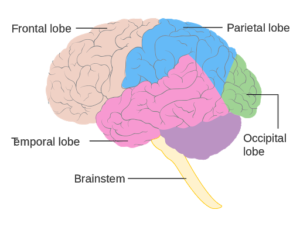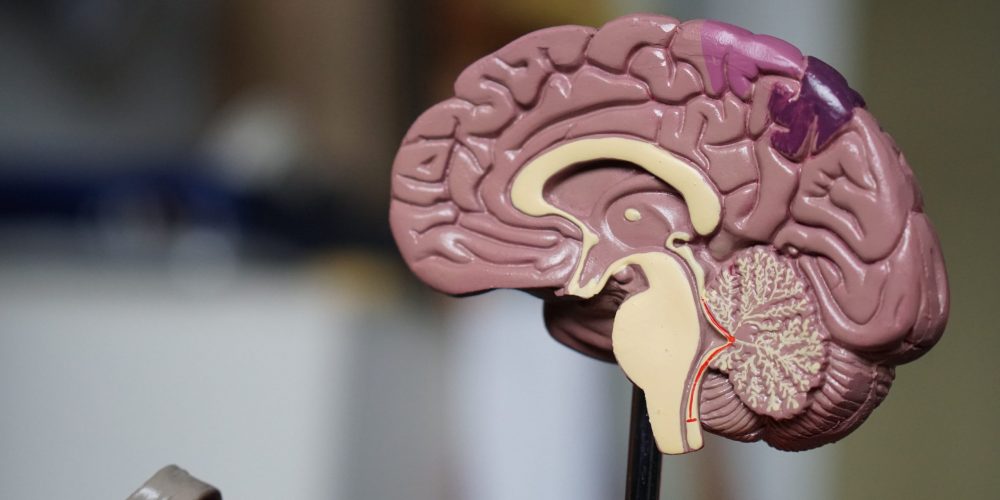Our brain is a complex organ. It controls many important and essential functions of life such as our breathing, body temperature, blood pressure, thoughts, learning, feelings, vision, senses and movement.
The average adult human brain weighs about three pounds. It looks like a wrinkled walnut and is soft and squidgy in consistency, which makes it very fragile and vulnerable to damage. To provide protection and structure, the brain is encased in a hard shell of bone called the skull.
What are the different parts of the brain and their functions?
The central nervous system (CNS) comprises the spinal cord and the brain. A small hole at the base of the skull connects the spinal cord with the brain stem (the lower part of the brain). The brain stem carries messages between the brain and spinal cord and is responsible for regulating most of the ‘autonomic’ (or automatic) functions which are vital to life, such as breathing and heartbeat. It also controls arousal and blood pressure.
The largest part of the brain is the cerebral cortex, which is divided into two parts: the right and left cerebral hemispheres. The two hemispheres communicate with each other via the corpus callosum, a thick bundle of nerve fibres. The right hemisphere controls the right side of our body and the left hemisphere controls the right.


Underneath the back of the brain (coloured purple in the diagram below) is a structure called the cerebellum which coordinates movement and balance. It is also involved in some information processing, memory and language functions.
Each hemisphere of the cerebral cortex is divided into four lobes:

The frontal lobes are located behind the forehead. They are involved with planning, organising, judgment, reasoning, personality, motivation, and the control of emotions and behaviour.
The parietal lobes are located above the ears towards the back of the brain. They process and interpret touch sensations and aspects of spatial information..
The temporal lobes are nestled behind the ears, and are importantly involved in memory, emotions, and language comprehension. They contain the primary auditory cortex which plays an important role in our ability to perceive sound.
The occipital lobes, located at the back of the brain, contain the primary visual cortex which receives and processes visual information. They play key roles in visuospatial processing, the perception of distance, depth and colour, the recognition of objects and faces.
How does the brain work?
Resources
Here are some helpful resources for learning more about the brain and how it works:
- Take a look at this interactive brain model from BrainFacts.org to explore different regions and their functions: https://www.brainfacts.org/3d-brain#intro=true
- Headway has a range of information and articles about the brain and brain injury: https://www.headway.org.uk/about-brain-injury/further-information/about-the-brain/

